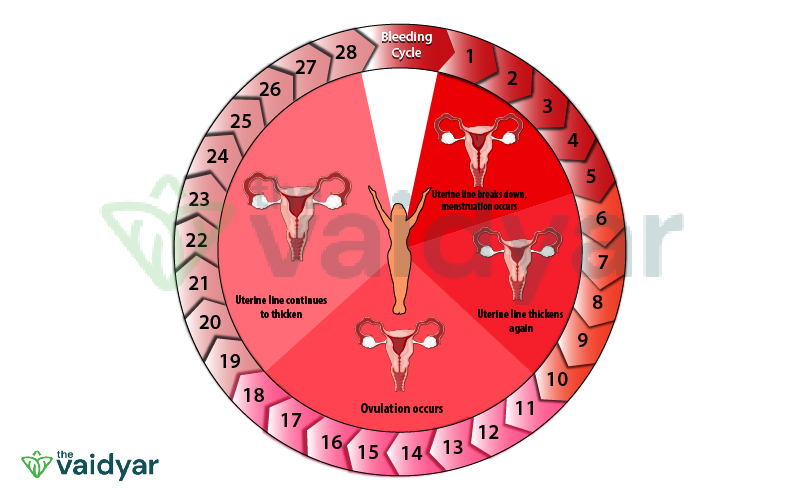Phases Of The Menstrual Cycle

Any Information you see will be valuable to someone today. Please share and Stay Connected.
The four main phases of the menstrual cycle are:
- Menstruation
Menstruation is the elimination of the thickened lining of the uterus (endometrium) from the body through the vagina. The menstrual fluid contains blood, cells from the lining of the uterus (endometrial cells), and mucus. The average length of a period is between three days and one week.
- The follicular phase
The follicular phase starts on the first day of menstruation and ends with ovulation. Prompted by the hypothalamus, the pituitary gland releases follicle-stimulating hormone (FSH). This hormone stimulates the ovary to produce around five to 20 follicles (tiny nodules or cysts), which bead on the surface.
- Ovulation
Ovulation is the release of a mature egg from the surface of the ovary. This usually occurs mid-cycle, around two weeks or so before menstruation starts.
- The luteal phase
During ovulation, the egg bursts from its follicle, but the ruptured follicle stays on the surface of the ovary. For the next two weeks or so, the follicle transforms into a structure known as the corpus luteum. This structure starts releasing progesterone, along with small amounts of estrogen. This combination of hormones maintains the thickened lining of the uterus, waiting for a fertilized egg to stick (implant).
Different phases mentioned in the menstruation cycle are Menstruation, follicular phase, ovulation, and luteal phase.